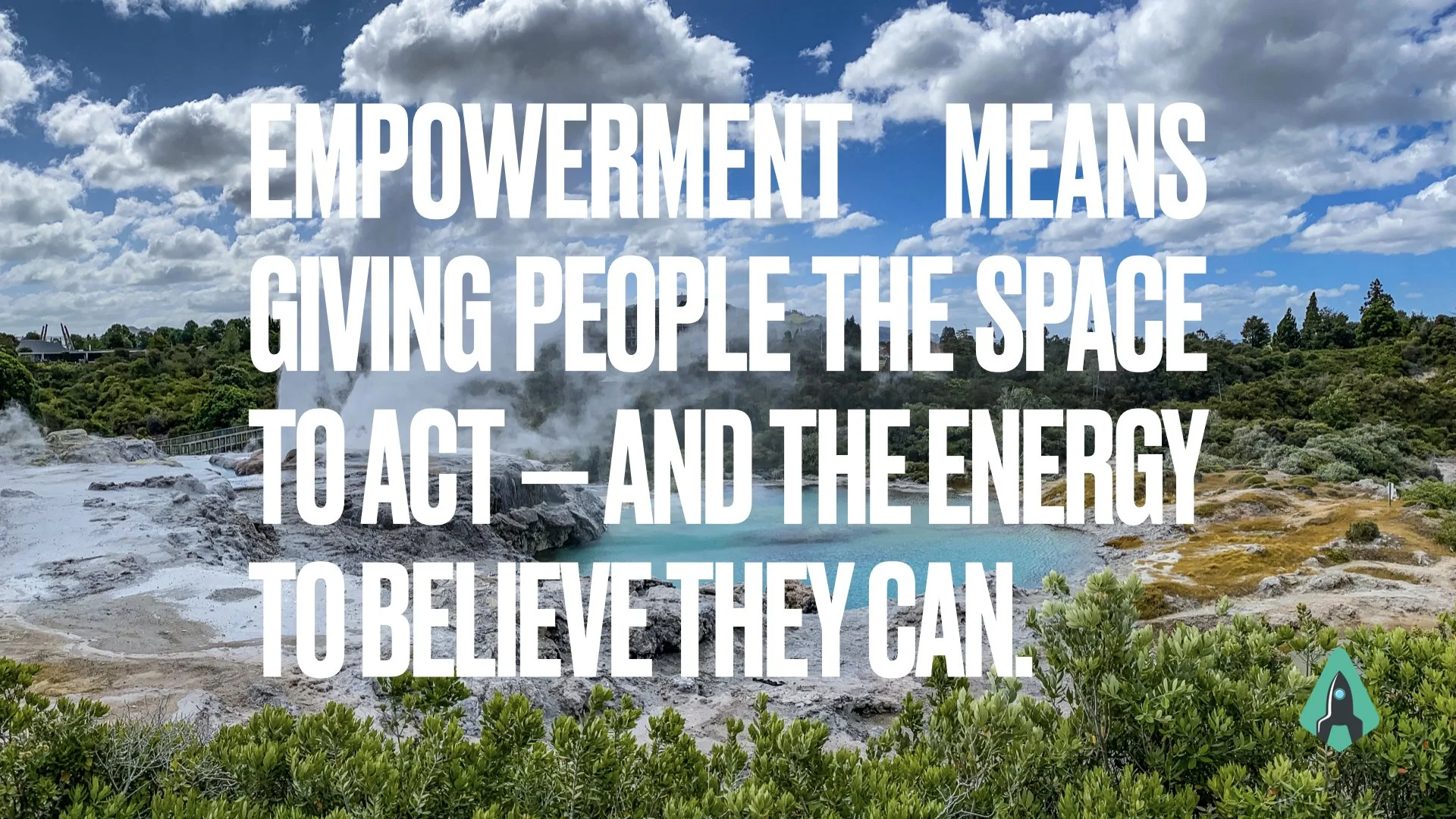Empowerment Begins Where Control Ends
Why real empowerment requires more than leadership — and how organizations, teams, and individuals can co-create it
“We want empowered employees.”
It’s a common statement in today’s organizational world — and often an empty one.
Empowerment sounds like something positive, future-oriented, people-centered. But in practice, it’s often reduced to a management technique or a vague cultural value. The truth? Real empowerment is rarely accidental — and almost never easy.
In this article, I unpack what empowerment really means, why it’s a shared responsibility, and how it can be intentionally designed across four key levels: organization, team, leadership, and self.
The Empowerment Paradox
We often say we want empowered employees.
But then we design systems that keep control, maintain rigid hierarchies, and reward conformity.
Here's the paradox:
We cannot empower others while holding onto power ourselves.
And we cannot expect empowered behavior in environments that quietly punish autonomy.
True empowerment requires more than handing over a few tasks or inviting input.
It means trusting people with power — and trusting the system to hold them.
Empowerment Is Not a Leadership Style — It’s a Shared System
While leadership plays a vital role, it’s not the sole source of empowerment.
Empowerment is the result of alignment between:
Organizational structures
Team collaboration
Empowering leadership behavior
Individual self-leadership and reflection
Let’s break that down:
1. Empowerment Through Organizational Structures
Empowerment begins at the systemic level. If decision-making is centralized, autonomy is limited. Hierarchies that remain tied to symbolic privilege — like executive parking spots or status-linked office sizes — communicate power differences daily, even unintentionally.
More empowering organizations:
Reallocate decision-making power to those closest to the problem
Detach hierarchy from personal status and anchor it in roles
Rethink rituals and structures that reinforce inequality
This doesn’t mean eliminating hierarchy. It means making it functional, not personal.
2. Empowerment in Teams
Teams are the operating system of modern organizations — and can either enable or block empowerment.
Empowered teams:
Work with shared leadership, not fixed roles
Create psychological safety and emotional support
Use inclusive decision-making formats that minimize hierarchy bias (e.g. brainwriting, anonymous idea collection)
High-performing teams not only achieve better results — they also empower each individual member through clarity, trust, and mutual respect.
3. Empowering Leadership
Leadership matters — but not because it holds all the answers. Empowering leaders are those who:
Share power intentionally, through participatory decisions and clear delegation
Support intrinsic motivation, by connecting work to purpose and encouraging initiative
Invest in growth, offering feedback, coaching, and reflection opportunities
Empowering leadership is less about being in control — and more about building environments where others can thrive.
4. Self-Empowerment
The final — and often forgotten — layer of empowerment is the individual level.
People empower themselves by:
Practicing job crafting (actively shaping their role and responsibilities)
Reflecting on what gives or drains their energy
Shifting their attention to meaning, purpose, and growth — even in routine tasks
In high-pressure environments, this type of reflection often falls away. But it’s essential. Self-empowerment begins when people learn to manage their energy, not just their time.
Empowerment = Power + Energy
Empowerment is more than a buzzword. It’s a strategic capability — and a cultural mindset.
💡 When we define it as Power + Energy, we get to the heart of what makes people not only capable, but motivated and inspired to act:
Power to shape their work and influence decisions
Energy to move forward, stay resilient, and feel connected to purpose
Space to grow in a system that trusts them to succeed
A Final Thought
If we want empowered people, we need to design conditions where empowerment is possible — not just desirable.
“Empowerment means giving people the space to act — and the energy to believe they can.”
So let’s stop asking how leaders can empower their teams.
And start asking how systems, teams, leaders, and individuals can co-create cultures that make empowerment real.
Reflection question:
What does real empowerment look like in your organization — and what still gets in its way?

